First Ride: Merida One-Sixty FR
When Merida launched their One-Sixty enduro bike a year ago, its versatility, climbing performance and smooth ride quality impressed. Now they've cooked up a freeride version aimed at bike park rats and rental fleets - it's for riders who want something affordable, simple and reliable that can handle the biggest bike park features. The alloy frame is category five-rated for DH & bike park use and carries a five-year warranty.
The One-Sixty FR is supplied with mixed wheels in all sizes (though the frame can still accommodate 29" wheels), and this bumps up the rear travel from 162 mm to 171 mm compared to the standard One-Sixty with 29" wheels. This is paired with a 180 mm fork and a coil shock from DVO. It's the first bike we've ridden with DVO's brand-new 38 mm fork. A downhill rear tire (with an enduro casing on the front) completes the transformation.
The One-Sixty FR is supplied with mixed wheels in all sizes (though the frame can still accommodate 29" wheels), and this bumps up the rear travel from 162 mm to 171 mm compared to the standard One-Sixty with 29" wheels. This is paired with a 180 mm fork and a coil shock from DVO. It's the first bike we've ridden with DVO's brand-new 38 mm fork. A downhill rear tire (with an enduro casing on the front) completes the transformation.
One-Sixty FR Details
• 171mm rear travel; 180 mm fork
• Aluminum frame
• Mixed wheel size (frame is compatible with 29" wheels)
• Size S-XL
• 63.5° head angle
• 78° seat angle
• Weight: around 17 Kg / 37.5 lb
• Price: £2,800/€3,360 - £3,500/€4,200
• Five-year frame warranty
• www.merida-bikes.com
• 171mm rear travel; 180 mm fork
• Aluminum frame
• Mixed wheel size (frame is compatible with 29" wheels)
• Size S-XL
• 63.5° head angle
• 78° seat angle
• Weight: around 17 Kg / 37.5 lb
• Price: £2,800/€3,360 - £3,500/€4,200
• Five-year frame warranty
• www.merida-bikes.com
Geometry
Merida use short seat tubes along with a travel-adjustable seatpost to allow most riders to choose between two or more frame sizes depending on their preference for stability versus agility. Merida call this concept "agilometer sizing". The Limotec seat post can be set anywhere between 40 mm and 230 mm travel so riders can get the maximum dropper travel for their chosen frame size.
Compared to the enduro version with its 170 mm fork, the 180 mm fork slackens the frame angles by around half a degree.
Frame Features
Flex pivots are commonplace on XC bikes thanks to their simplicity and lightness, but few companies make them in aluminum and even fewer for long-travel applications. As the suspension compresses and the rocker link rotates, the One-Sixty's seatstays bend a few degrees one way and then the other. Merida designed it to minimize the flex pivot's range of motion such that it doesn't noticeably contribute to the suspension forces and it shouldn't suffer from metal fatigue over time. Merida say it's been fatigue tested by the Zedler Institute and went "well beyond industry standards". This included a custom test where the suspension was fully cycled with a shock fitted over 100,000 times. Merida's five-year warranty suggests they believe it will stand the test of time in the real world.
Fleet operators and home mechanics probably won't like the through-headset cable routing, but Merida say that threading a cable through the frame is relatively easy thanks to the huge opening in the head tube (once you remove the fork) and a service port under the downtube. On the plus side, if you do decide to venture beyond the bike park, there is room for a full-size water bottle plus bosses for a tool holder inside the frame. There are also mounts for a bolt-on rear mudguard on the seatstay.
Suspension Design
As the flex occurs in the seatstay and not the chainstay, it's a single-pivot affair like other bikes in Merida's range. That means the suspension stays deeper in its travel during braking than most Horst link bikes, which is no bad thing in my view.
The leverage curve is pretty progressive through most of the travel, with a linear or slightly regressive phase at the end. This shouldn't be a problem given most coil shocks have a substantial bottom-out bumper which affects the last 20-30% of the travel.
The leverage curve is size-specific, so larger frames have more progression. The idea is that bigger riders need more support while smaller people have more trouble using all the travel. The difference is achieved by moving the front shock mount; the back end and link aren't size-specific.
The leverage curve is pretty progressive through most of the travel, with a linear or slightly regressive phase at the end. This shouldn't be a problem given most coil shocks have a substantial bottom-out bumper which affects the last 20-30% of the travel.
The leverage curve is size-specific, so larger frames have more progression. The idea is that bigger riders need more support while smaller people have more trouble using all the travel. The difference is achieved by moving the front shock mount; the back end and link aren't size-specific.
The overall progression (the change in leverage from 0% to 100% travel) goes from approximately 15% in XS to 25% in XL. That's about average to quite progressive, respectively, so there should be plenty of bottom-out resistance for most riders.
Build Kits
Merida had to make smart choices to keep the FR affordable. The top-spec bike makes use of a Shimano Deore drivetrain with TRP brakes, both of which perform solidly. A 220 mm front rotor is a nice touch. The entry-level build makes do with Shimano's ten-speed Cues drivetrain but still offers an 11-48 tooth range to keep climbing on the table.
On the top build, the new Onyx 38 D2 fork does away with DVO's adjustable coil-negative spring system (called OTT) in favor of a more conventional and user-friendly self-equalizing air spring. Low-speed compression damping is adjustable with just three settings to choose from, alongside plastic volume spacers and rebound adjustment to play with. The DVO JADE X D2 shock found on the 600 model has three compression modes: open, mid and firm. The 400 model gets the D3 shock without the three-position compression switch, along with an SR Suntour RXF 38 RC fork, with low-speed compression and rebound adjustment.
For full specs see here and here.
Ride Impressions
I rode the One-Sixty FR for a full day of mostly uplifted riding. I did enough pedalling to get a sense of how much the mixed wheel setup, coil shock and DH rear tire compromise the climbing composure compared to the carbon-framed enduro version I rode last year. Thanks to the steep seat angle, it's still a comfortable climber - especially compared to other affordable park bikes like the Saracen Ariel 80. However, there is a noticeable amount of pedal bob with the shock left open that wasn't present on the enduro version, but this can be eliminated if you're willing to use the shock's "firm" or "mid" mode.
On the descents, I didn't get a chance to ride it on anything that would justify a 170/180 mm park bike, but the suspension was impressively supple when riding rougher sections of trail. I couldn't get the fork to rebound fast enough, despite running 10 psi more air pressure than recommended for my 85 kg weight, so the fork slurped lazily over high-frequency bumps. But the off-the-top sensitivity is excellent (this is a real weak point of DVO's OTT forks for heavier riders), which kept the bike stuck to the ground. The flip side of that is the fork sits very low in its travel (according to my tape measure, the axle-to-crown measurement is similar to most 170 mm forks), which means the head angle isn't quite as slack as it should be, and I'd rather it sat higher on steep sections. I'm planning to do some more fettling with this fork in the near future so stay tuned.
I was impressed by the TRP brakes and long-travel dropper post - I'm using all 230 mm. Overall it's a solid-feeling package for the money that seems relatively versatile given the park bike designation. I'll have to try it on more demanding trails to say any more.
Author Info:
Must Read This Week
Sign Up for the Pinkbike Newsletter - All the Biggest, Most Interesting Stories in your Inbox
PB Newsletter Signup
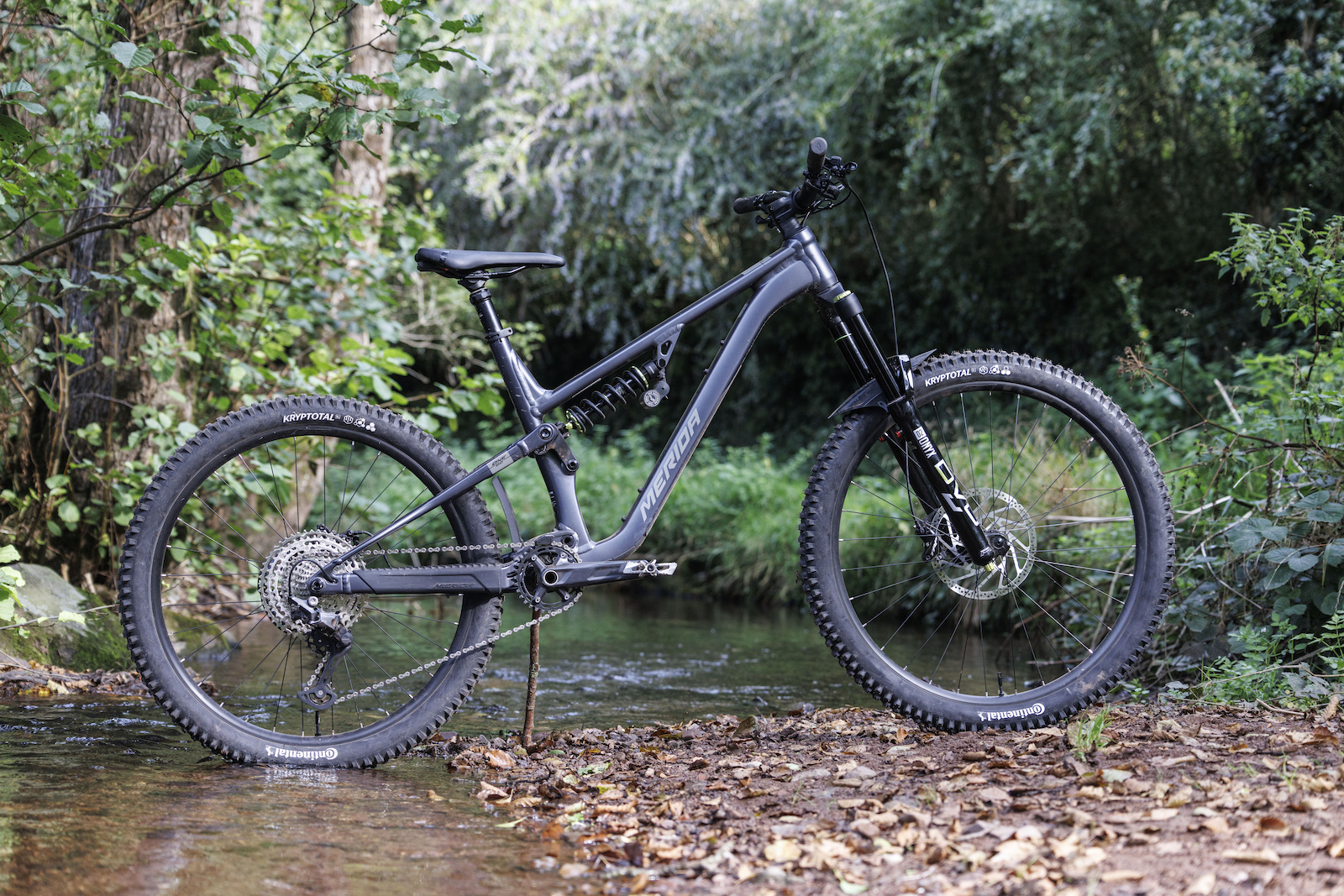

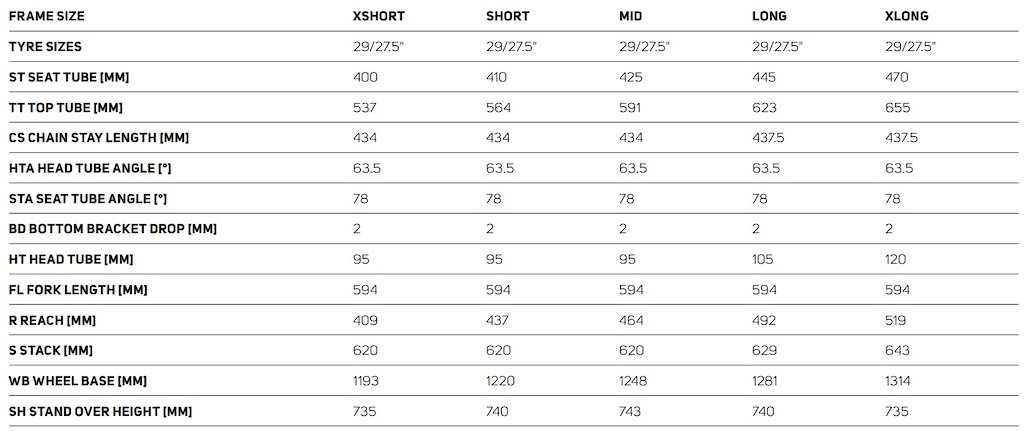
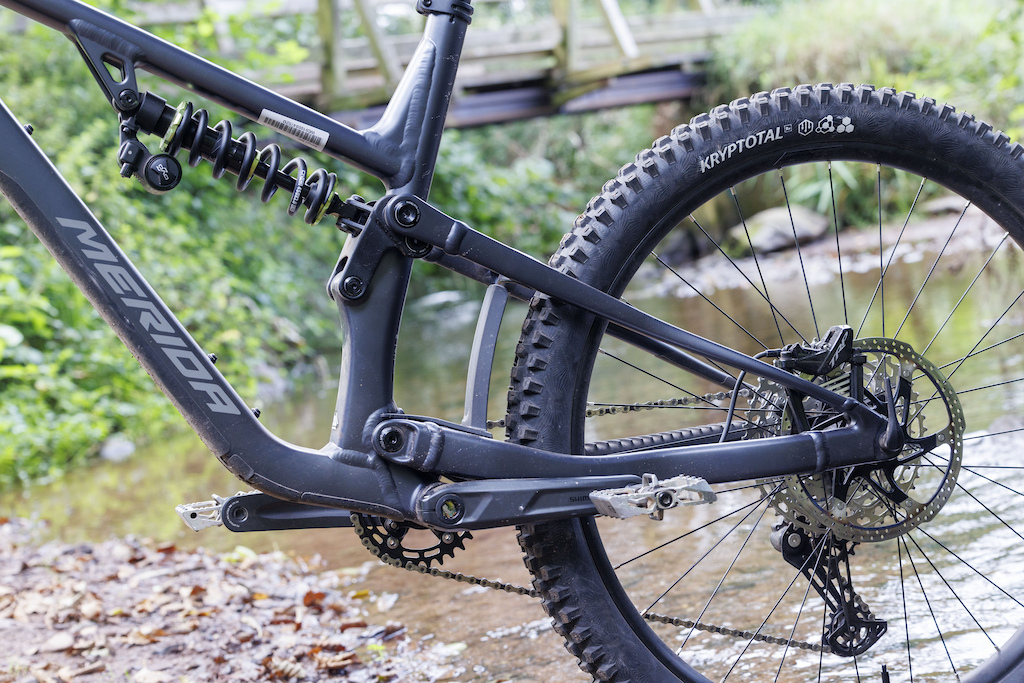
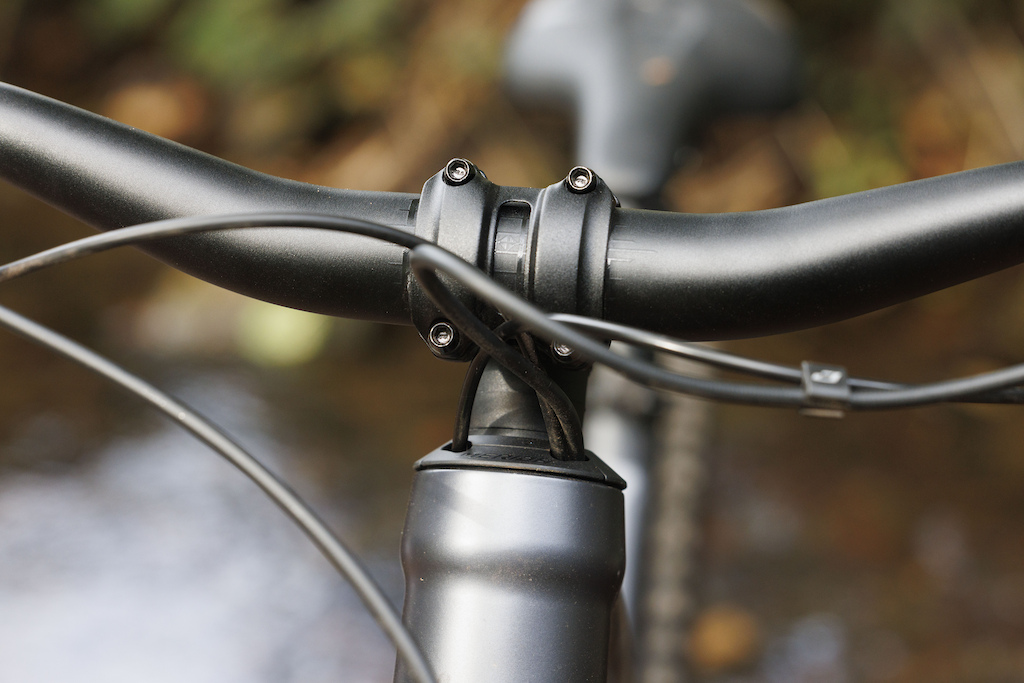




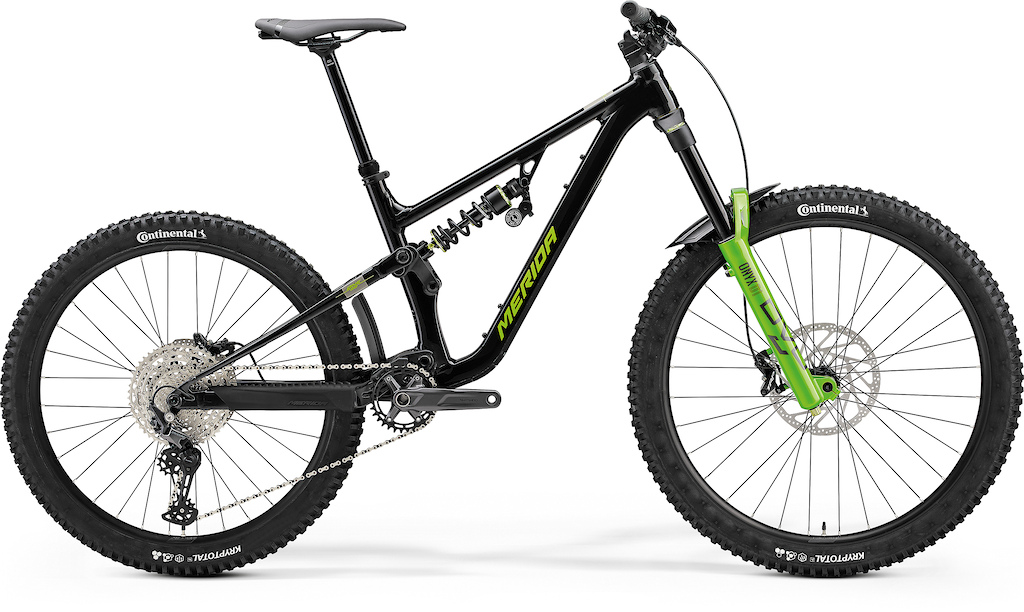
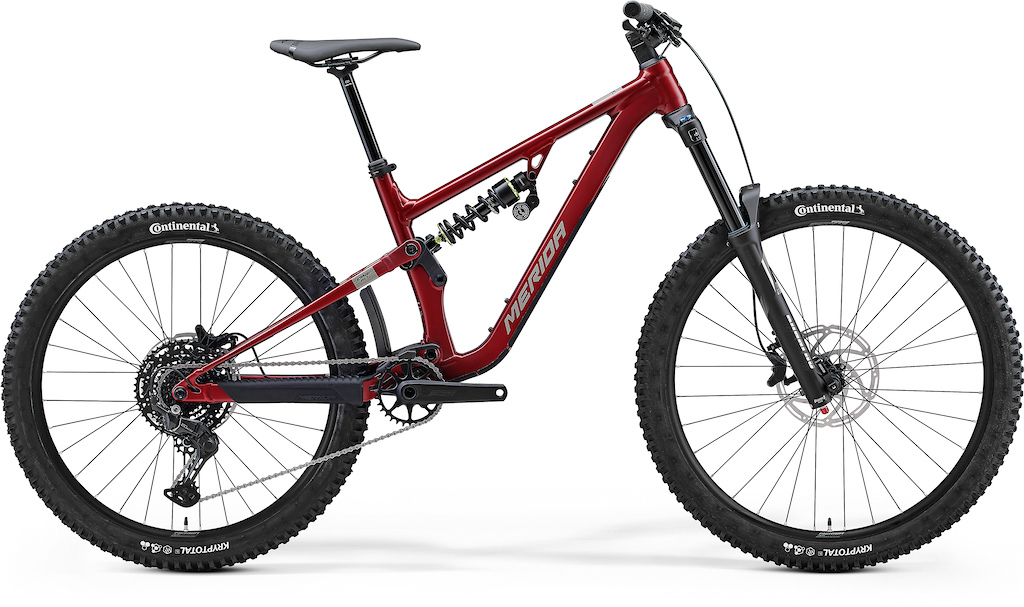



For racers why not (well I disagree but let's imagine they don't care), but that's a complete non sense for the target of this bike...
This thing really needs to die in a short and painful way, and other brands already begun to understand that it was leading them to nowhere
Oh good, I get to remove the fork to work on my cables/hoses. /s
Dear Merida (and others)
Your customers do not want to have to take off the front wheel, remove the brake calliper from the forks, take off the handlebar and stem and drop the forks just to replace a cable.
imagine the screams as some park rat starts with a new cable and ends with their headset bearings bouncing all over the floor
I think it goes without saying at this point that the market doesn't want it, and likely shouldn't be done, but you do have to understand that most people buying most bikes do not do their own work. Pinkbikers are a minority within cycling, not the norm. From a mechanics point of view, it really isn't too much extra hassle, but you are going to pay a bit more at the end of service for it.
The thing that bothers me more is your housing/hoses potentially rubbing into your steerer, that said, most of these bikes are coming with some sort of cover to avoid that damage.
I don't know if I agree with this. Depending on the bike and its intended use, a LOT of people are doing at least minor bits of work on their rig. If you live in a busy mtb city, you don't have a choice, since turn-around on bikeshop work during the summer can be multiple weeks.
Just attach the new housing to the old housing and pull it straight through. Like everyone has done for droppers since 2010.
And anyway, cable housing does go bad, typically by rubbing the frame at pivot points (a problem exacerbated by internal housing ports). I find mine make it maybe 1-2ish years before they're starting to look too scuffed and I replace them. You probably don't change too many housings because you're probably dealing with customers in the early years of bike ownership.
Not going to get caught in the mud on this one, we disagree and we both are basing our opinions on our experiences.
All I'll say is it seems people are overracting about the cable tourism thing. Plenty of the people responding with "it isn't bad" are people who have worked on these systems. Buddy above this post got downvoted for saying "you can pull a new housing in when you pull the old housing out." Why is that? I get this really odd feeling this is turning more into a teamsport level debate rather than anything centered around the factual matter of bike repair work. Even this discussion was immediately bogged down by "no your experience is wrong" while completely ignoring the meat of the discourse. It's incredibly disappointing to read through.
So this trend must die ASAP.
This trend will die when people stop buying bikes with this on it; don't hold your breath.
Mate, tools for this exact job have existed for years. You're literally just saying "I have no idea how to work on this" to someone explaining how it works to you. You do not need to remove the fork to replace the housing, you pull new housing in while you remove the hold housing.
The real problem is putting the headset/fork together as the cables arnt very long so you dont have alot of room...
HOWEVER its easy if you remove the Controls from the bars... Almost the same as non headset routing.
the only real annoying parts are: lack of Aftermarket IS52 headsets and Cable rub on headset entry...
First is of course cable tourism. On an XC or gravel race bike there is maybe an argument. But for a park bike?
Second… they are doing flex stays on an aluminum seat stay? Isn’t aluminum a metal without a “knee”, meaning, any bending fatigues it some amount? Unlike say steel, which has a “knee” in its fatigue chart, where as long as it doesn’t bend past a certain amount, it will never fatigue?
Material properties isn’t my field. But I swear I remember reading about this before.
Some bike metals have a fatigue endurance limit (ex. steel and titanium). The strain threshold for the endurance limit is so low that it's not relevant for bikes, i.e. bikes fail in fatigue due to high-strain events. Fatigue endurance limits apply to the high cycles and low strain you might see in the housing for a motor that runs continuously for years.
Seatstays flex a many times in their lifetimes, of course, but it's orders of magnitude less than the vibrations in the motor housing example.
As such, an aluminum frame can be extremely durable, even with flex stays.
From a durability standpoint, this implementation of a flex-pivot is totally fine. The aluminium won't fatigue to the point that it's even noticeable while riding within the lifespan of the bike. You could ride the crap outta this thing day in day out for years without the structural degradation reaching anywhere near critical level.
Also, from a durability standpoint, a structure with a flex-pivot made from carbon fiber wouldn't inherently be safer than one made from aluminium. In fact, the homogenous nature of the material itself would rather mean that metals lend themselves rather well for such an application.
Also also, the myth about steel (or other ferrous metals) supposedly having a fatigue limit beyond which they just magically stop degrading isn't really true under real world conditions. It's one of those things that are only technically true under controlled conditions in a lab.
www.rent4trail.com
*from my experience internal routing is GREAT (not much experience with inrental through HS) for rental fleet and personal use if designed with maintenance in mind (so far most bikes that had).
*external routing clamped with zipties or spec clamps is horrible then you want to move rental bike saddle with dropper 1cm up/down.
*10 and 11 speed drivertrain is sweetspot for MTB trail use.
have few rental bikes with 11speed and gears are always working perfectly. 12sp systems are just too fragile. always making little rubbing, miss shifting, ghost shifting.
Hopping to see some high end wide range 11speed drivetrain for persoanl use. Shimano deore 11 speed best that you can get 11-50 range is perfect
*COIL shock for rentals is not very good. less maintance - yes. But at same time no adjustability so M bike with 60kg rider and 90kg rider will have very different "performance". Trust me changing spring is not option....
Hmmm more like a complete “pain in the arse”. Will never buy.
I wasn’t sure about the internal routing either, but as the reviewer mentioned, the massive headset and multiple access ports make us a piece of cake. The bike is a pleasure to work on.
My wife is 5’0 and is able to run a 210mm dropper which is pretty amazing.
It’s light, works, well priced and sensibly specced.
And …. I love it!
Great bike! Plowable and flickable!
(And yes: through headset routing is just a shitty idea that should be dropped. But, fortunately, it didn’t prevent me from buying this great bike)
As a result of these relationships, Merida will not sell or support any of their bikes in the USA.
Shame, as they build some cutting edge stuff.
Cable tourism is the only negative here, otherwise this is a no compromise bike, considering price geo, spec, looks are ok also.
The XS size also makes this one of the f* rare options if you're looking for less than 430mm reach these days... Which is ridiculous
@Merida, or anyone else, have you got any theory or evidence to suggest that I am wrong?
The short version is that SSK is important for pedaling anti-squat and brake squat (or jack, anti-rise - however you want to look at it), and the rider's centre of mass is fairly predictable for a given frame size.
Suspension support is nowhere near as predictable, so it's difficult to apply SSK to the motion ratio. It's all about the ratio of strength to weight for the rider (well, the rider + bike), which has a weaker relationship to frame size than the centre of mass location. Ideally, both the spring and the damper will be properly tuned to each rider's needs. Unfortunately, many companies spec the same shock tune across all sizes, which makes SSK a useful tool for adding a little extra support late in the stroke.
It may be reasonable to assume a company that cares enough to implement SSK also cares enough to spec shocks with different tunes for each size (this is more practical for a large company, like Merida, than a small company), reducing the need for motion ratio SSK.
Another consideration: riders of smaller frame sizes are more likely to be women, who are more likely to have a lower ratio of strength to total weight. As such, motion ratio SSK becomes more of a gender-specific kinematics issue. When viewed from this perspective, statistics favour a less progressive motion ratio curve for smaller sizes.
I have given the topic of ramp up compared to rider weight some thought in the past, (I was considering volume tokens in air forks at the time) and came to essentially the same conclusion as Rambotion. That being, rider weight doesn't intrinsically effect the amount of progression required.
I certainly agree with you that height has a significant effect on brake and pedal interactions, but I think the suggestion that Merida is making (heavier riders should have more progressive rear suspension) is flawed at best.
Watching him climb on that thing is comical as the front end runs off the trail, wheelies, etc. Not sure how he descends so fast but maybe going downhill enough weight shifts forward that it works, and he is just really talented at descending.
I have got longer than usual legs and arms for my height. I ride coil fork with 20% sag with no bottom outs, at the same time RM Slayer is my first frame I don't have issues with bottom outs (it has around 50% progression if I am not wrong).
Po
@SunsPSD: Unfortunately, many bikes use a slack actual seat-tube angle that moves the saddle rearward at an alarming rate as it's raised. This doesn't mean a tall rider's centre of mass is intrinsically more rearward, just that some manufacturers have done a poor job of ergonomics across the size range. Also, tall riders' centres of mass are almost universally higher, so they experience greater weight shift when the ground isn't level - especially toward the rear, since rear-centres rarely change in proportion to height in the way front-centres change.
@gabiusmaximus: It's certainly possible for a small rider to have a greater ratio of strength to weight than a large rider. As you noted, that effect is well-known among elite athletes in climbing, gymnastics, power lifting, etc. Unfortunately, there's so much variability in this ratio across the full spectrum of bike customers that it's impossible to recommend a dramatic motion ratio SSK relationship; safer to leave the motion ratio fairly consistent and recommend size-specific damper tunes. If a company has a women's product line, thereby eliminating that variable, I recommend a less progressive motion ratio for those models, though not necessarily much of a motio ratio SSK. As I mentioned earlier, optimizing the motio ratio can be done with respect to sex, but less so with respect to size.
@rambotion2: To clarify, I did not suggest anything about whether Merida does or does not use size-specific shock tunes; I have no knowledge of this. Some brands do, and I commend them for this; hopefully, all brands will eventually do so, though it can be more cost-prohibitive to small brands than to large. As I mentioned earlier, Merida's motion ratio SSK strategy may make sense if we assume a greater proportion of female riders on the smaller sizes. If this is the motivation for their SSK - which is not reflected in Seb's description - I would suggest they account for the expected proportion of female riders among customers for this bike and the height distribution curves for females and males. Bikes of this category usually have a highly male demographic, so the female representation in the probability distribution, with respect to SSK, would have a small influence on the smallest sizes and minimal influence on larger sizes - i.e. I would not expect to see the uniform spacing of the motion ratios across the sizes. Hopefully this gives some insight into how I tailor my kinematics packages for clients!
A rider putting less force into the chassis can have a lighter chassis with more compliance, and kinematics that suit their physiology. This is especially true for carbon frames, where each size requires a separate mold and - hopefully, but not always - size-specific lay-up
As I said above, SSK is beneficial for pedaling and braking performance, and is strongly correlated to frame size. SSK can also be highly beneficial to suit a rider's physiology, but it can be difficult to correlate with frame size.
Some of responsibility can be on the rider: many riders who spend thousands extra to save a pound and get status-symbol stanchion colours would get better performance from a bike with lower base price and spending some of the cost difference on custom damper tunes. This is most true when certain parameters (weight, strength, speed, terrain, etc.) aren't in the middle of the bell curve.
Really worthwhile upgrades are the domain of nerds like us, who play hardly a role in the spreadsheets of product managers.
Ultimately, people can spend their money however they want, on whatever makes them happy, regardless of whether we share their values. All I can do it try to educate people on the choices available and try to infuse the products they want with the maximum amount of what I think is good for them!
This may be misinterpreted by some as heavier and lighter riders requiring more/less progression to solve the issue, which is IMO incorrect.
SMRT..
It got a longer fork and mullet on all sizes (which you can convert to on the normal one-sixty in 5 mon( and that’s it.
The rest is marketing.
Really? No way! Mtb journalism at it's finest...
Simple, effective and looked clean.
This headset nonsense has got to stop.
it would be really nice to see a long travel full suspension bike that's as simple and easy to service as possible.
gave up on this hope when I saw the cable tourism
Even if "flex pivot" were a thing, the flex is in the seat stay, not the chainstay. If the chainstay is solid from pivot to axle it is single pivot period. The axle follows an arc just like any other single pivot. This is basically any Kona or old Commencal with marketing applied to their skinny chainstays "we meant them to flex!!" Nothing wrong with a well applied single pivot. My Druid and Meta AM are single pivots and great bikes. I also liked my horst bike.
1. frame (ground)
2. "rear triangle" ( coupler and output link merged into one)
3. crank link that connects to the shock (and back to the frame)
In this case yeah it is a single pivot but the shock is still leveraged by the chain stay by a link. as opposed an Orange or a Cotic where it is fr fr a single pivot with the only leverage adjustment is the relative placement in regard to the BB lol
www.pinkbike.com/forum/listcomments/?threadid=246700&pagenum=1#commentid7210325
(Where do I get some DH Kryptotals in stock at all...)
And it's about to be tested to death by riders. I can't wait for the results!